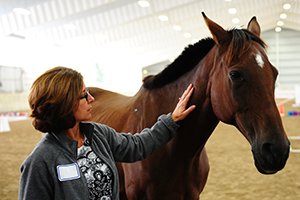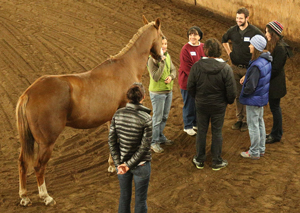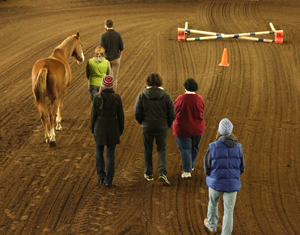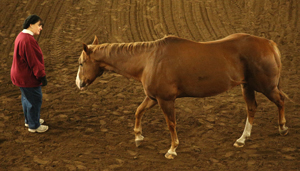Why Horses and Leadership?

The Horses Will Help You Become Aware
Our approach to leadership and building strong teams using horses is uniquely different. It is effective for those eager to grow, as well as the colleague that doesn’t see the impact of their leadership style on others. Why? Because of the horses.
The horse provides honest, unbiased in-the-moment feedback to you as a leader and team member that you won’t get from a classroom setting. The horses make it very clear how you show up as a leader, and what you have been “practicing” that may not get you the results you want. In their feedback, they become your master teacher in your quest to be a leader who is more present, integrated, congruent, creative, and clear and confident in your actions.
Horses are masters of dual awareness.

Horses are prey animals, with a strong flight response. They spend the majority of their time in their reptilian brains (body) where they are sensing and feeling what is happening in their environment. Their senses have remained highly tuned – their bodies become acoustical instruments reading all that is around them. In addition, their eyes are on the sides of their heads, giving them a wide view of all that is occurring. Thus, horses are masters at dual awareness.
As humans, many times we ignore what our body system is telling us about a person or situation, and we rely only on what our logical brain is processing. Our eyes are in the front of our heads, looking forward, making thing happen, focused on our goal in a linear fashion.
The result is that we cut ourselves off from accessing all the information available to us. It is very difficult to be self aware and aware of others when we are not able to access information from our bodies. Learning to lead in a horse-like manner gives you access to a broader range of information and a wider view.
A herd mentality requires you step up.

In addition, horses are herd animals that highly value their social structure and their ability to work as a team. In the herd, there is a clear hierarchy of leadership where the herd leader (many times a boss mare) is responsible to remain on alert, allowing the rest of the herd to rest and eat. Once their positions are clear, and respect is earned, then they relax and work together as a team. Without it their survival is threatened.
In a similar way, when we work with horses, we become our own herd. A horse wants to know if you will be the leader, or if they will be the leader in a particular moment. For example, if your body language communicates that you are incongruent, not clear on what to do, or are not confident you will get there, they will take over and do what they choose. As you change those factors, they will change their response to you, allowing you to practice new strategies, beliefs, and approaches.

The types of questions that horses help us answer or see more honestly are: do I believe I am a leader? How do I “show up” as a leader? How does that impact others? Do I know where I am going? Can I hold a picture of my goal in my head and focus on reaching that goal when things go wrong? How did I plan? Did I think about the things that could go wrong? Can I come up with creative ideas to try when I feel stuck and nothing is working? How do I relate to others in a team?
Horses embody and teach Somatic Awareness
The horse is always in the present moment. Their presence helps all of us to quiet all of the hubbub in our heads and truly be present in this moment to savor what it has to offer. It helps us to access those feelings, sensations and emotions that will provide us with key information from our bodies, if we only allow them to be heard.
Just as horses can finely tune into their environment, they will tune into you and your team and “read” what is going on with you and respond immediately. Without judgment or agenda, the horse may choose to move away, not move, connect with you, walk with you, or ignore you completely and provide a changing mirror of how you are leading moment by moment.
Sometimes our body language is showing we are afraid, frustrated or angry, but we try to “put on a happy face” that is incongruent with an involuntary rise in blood pressure, muscle tension and emotional energy. Horses often mirror the suppressed emotion and calm down when the person recognizes that tension.
The emotion doesn’t have to go away – it just needs to be acknowledged. The moment the mask is removed and authentic feelings are acknowledged, an agitated horse will sigh, lick its lips or show some other sign of release. Horses have a keen emotional sense and cannot be easily manipulated or lied to; they are only comfortable when authentic feelings and motivations are being acknowledged.
So as the horse reacts to us, we start to see a picture of who are and what we have been “practicing” for years as a leader. We can practice being self aware and making changes to how we are showing up. They help us “get real” with no judgment or drama, and many times a sense of humor.


